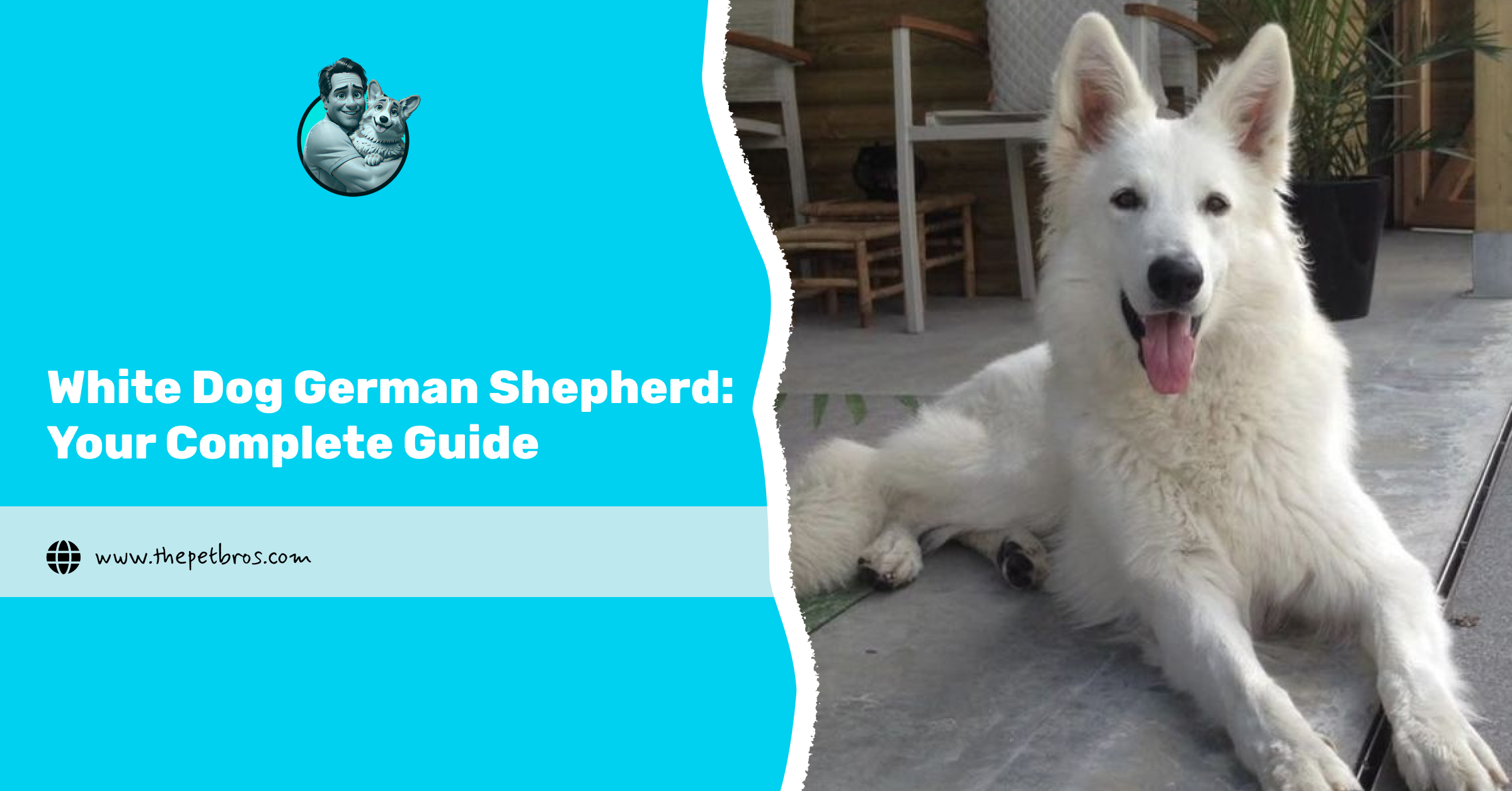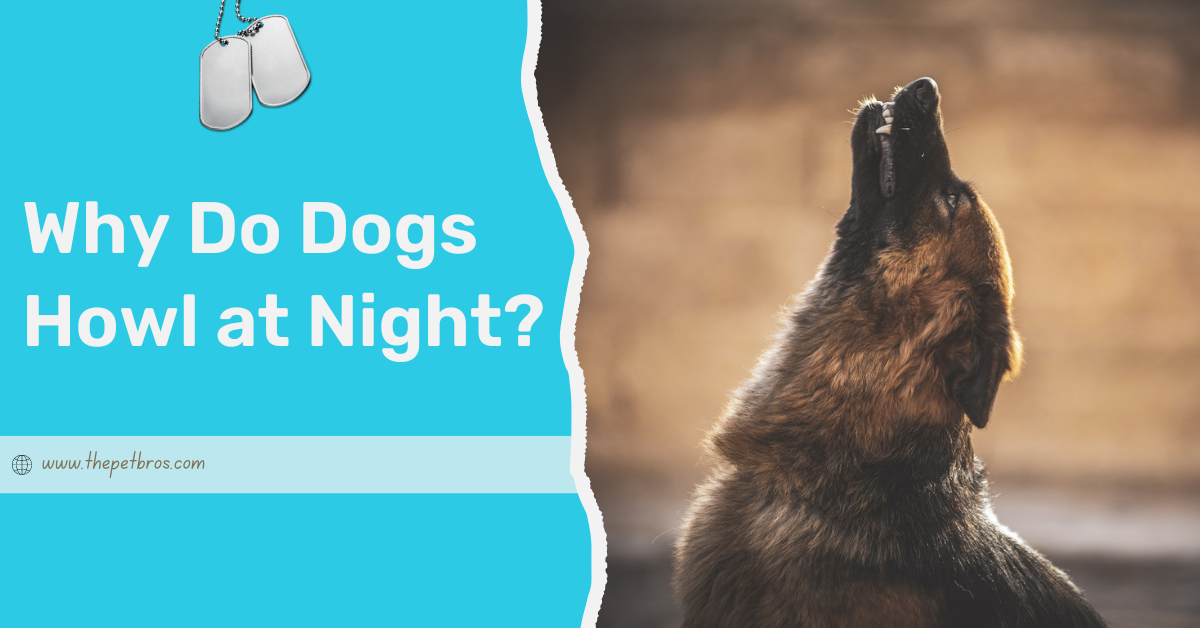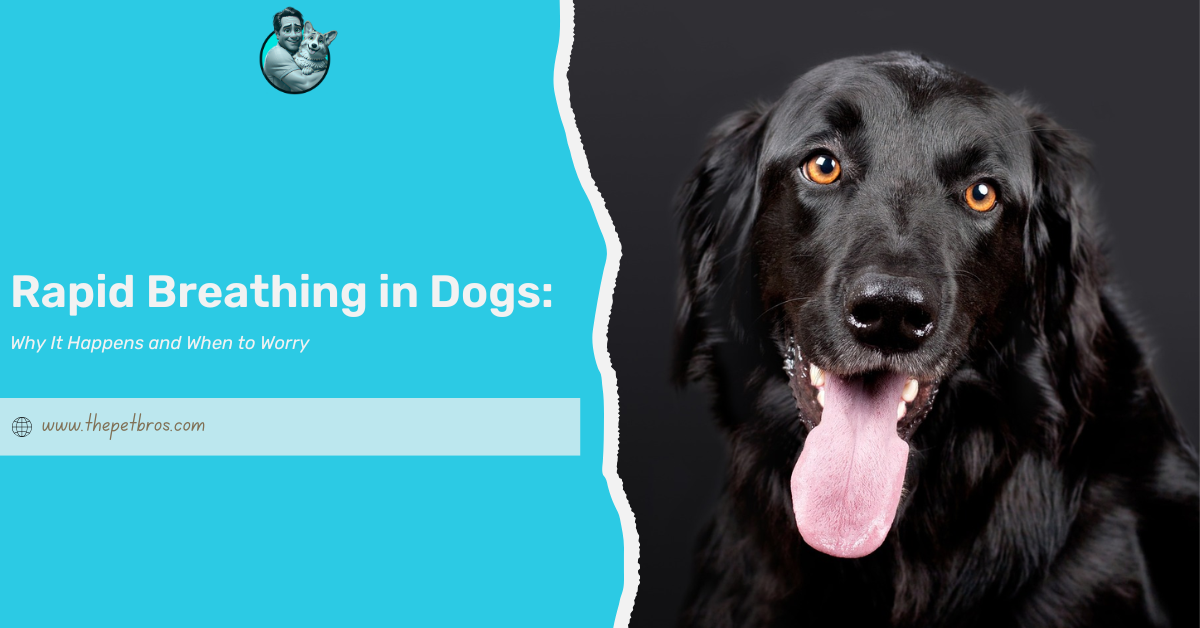Some German Shepherds are known for their classic black and tan coats. But every so often, you see a dog that makes you stop in your tracks, the white dog German Shepherd, the kind of dog that makes people stop mid-walk and ask, “Wait, is that really a German Shepherd?” One German Shepherd fact remains: behind the stunning appearance lies the same sharp intelligence, loyalty, and “always-on-duty” personality that German Shepherds are famous for.
The white shepherd stands out not just for its colour, but for its history and charm. While some call it simply a “white shepherd,” others debate whether it’s a colour variation or a breed of its own. In this article, we will discuss it all.
The Origin and History of the White Dog German Shepherd
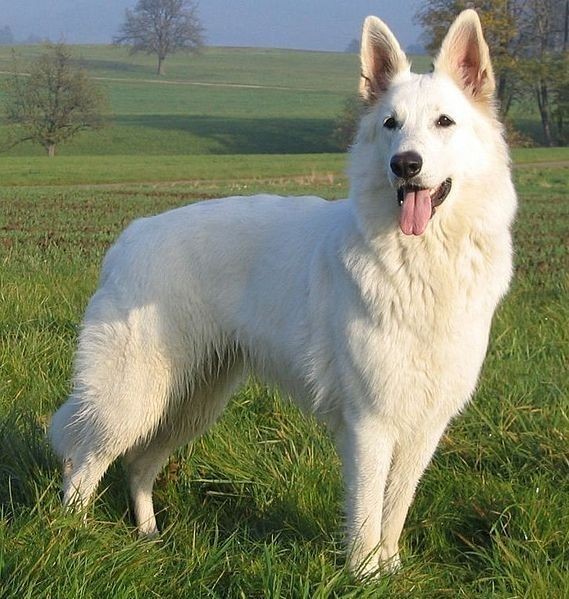
Long before the white dog German Shepherd became an internet sensation for its movie-star looks, it was simply part of the original German Shepherd family. In the late 1800s, Captain Max von Stephanitz set out to create the perfect working dog: intelligent, loyal, and versatile. Along the way, some of those early Shepherds carried a recessive gene that produced white coats. It wasn’t a flaw; just genetics doing its thing.
However, as the breed gained fame, opinions began to diverge. By the early 1900s, darker coats became the preferred “look” for show dogs, and the white coat was unfairly labelled as undesirable. In 1933, the American Kennel Club (AKC) took it a step further by disqualifying white-coated Shepherds from competitions, a move that would sideline them for decades.
Thankfully, lovers of the breed didn’t let the story end there. By the 1970s, dedicated owners in North America formed the American White Shepherd Association (AWSA), fighting to preserve and celebrate this variation. Recognition soon followed through the United Kennel Club (UKC), and in Europe, the white Shepherd took on its elegant new title: the Berger Blanc Suisse, or White Swiss Shepherd.
Appearance, Temperament, and Personality of a White GSD
At first glance, the white German Shepherd looks almost ethereal, with the same confident stance and athletic build as its black-and-tan cousins, only dressed in a pristine white coat that somehow makes the whole breed look gentler.
- Appearance: The coat is what makes this Shepherd unforgettable. Compared to other similar-looking dogs, it has a double layer of pure white fur that can range from plush to medium length. They’re slightly longer than they are tall, giving them that graceful, balanced silhouette that German Shepherds are known for. Muscular and alert, their almond-shaped eyes (usually brown or amber) contrast beautifully with the coat, adding to that “majestic but approachable” look.
- Temperament: White Shepherds carry the same intelligence, loyalty, and protectiveness as any standard German Shepherd. They’re deeply bonded to their families and happiest when they have a job or purpose, whether that’s guarding, training, or simply shadowing you from room to room. Compared to darker Shepherds, they often come across as a little softer in personality, friendly with strangers, yet still cautious enough to make excellent watchdogs.
- Personality: What people love most is their balance, protective but gentle, alert but affectionate. They’re playful with kids, patient with training, and thrive when they’re mentally stimulated. A white German Shepherd doesn’t just want to be part of your home; they want to be part of your routine. Ignore them for too long, and they’ll remind you they’re not just decoration, and it might be by digging into your upholstery.
5 Best Activities for Your White Dog German Shepherd
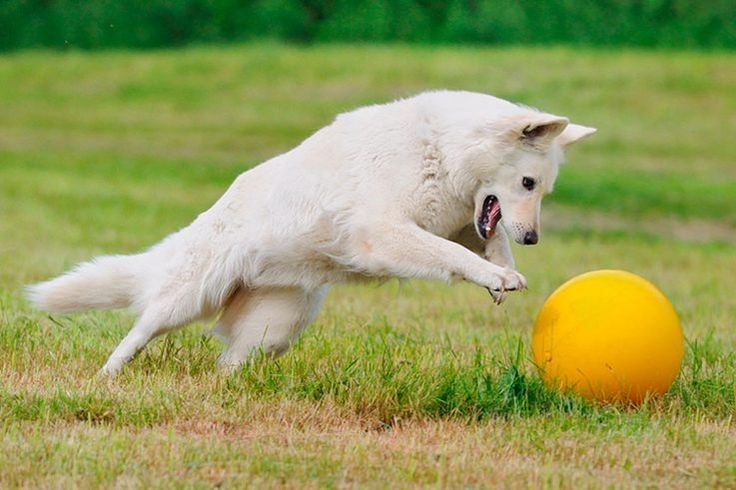
- Daily walks and runs: A long walk or jog keeps both their body and mind in shape. The white coat looks even better when they’ve had their cardio fix.
- Fetch games: It’s simple, timeless, and great for burning off energy. Whether it’s a tennis ball or a flying disc, this game brings out their inner athlete and your inner dog parent pride.
- Agility training: These dogs thrive on challenges. Setting up a few jumps or tunnels in your backyard can transform playtime into brain time; it’s exercise with a purpose.
- Hiking adventures: They were bred for endurance, not naps. A weekend hike is their version of a holiday, offering new scents, sights, and enough exercise to make that post-hike nap well-deserved.
- Obedience and trick training: They love learning new things. Teaching them new commands or fun tricks keeps them mentally sharp and strengthens your bond with them. Just keep sessions short, rewarding, and positive.
What is a White Shepherd’s Health and Lifespan
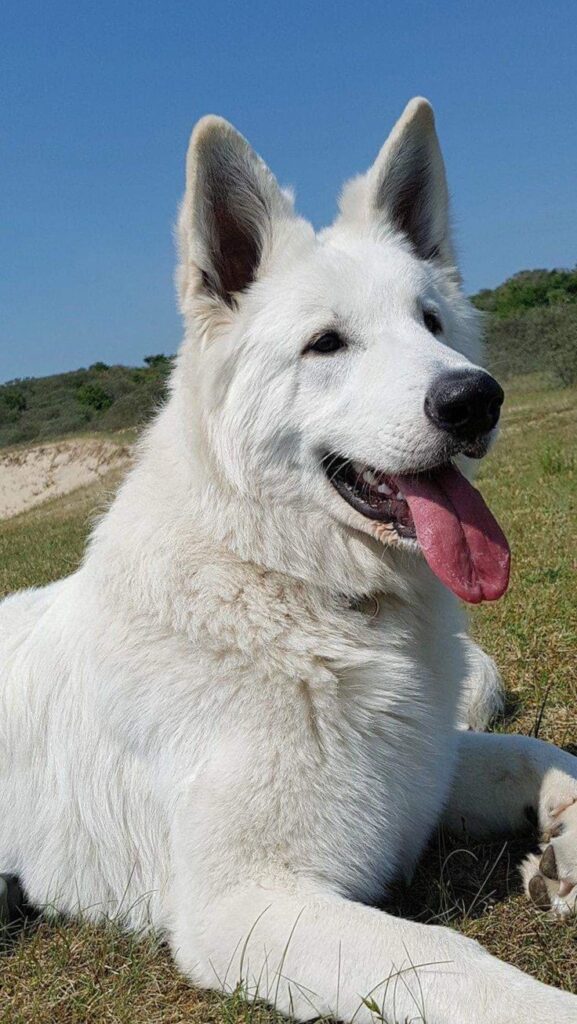
The white Shepherd might look like it stepped out of a fairytale, but underneath that beautiful coat is the same strong, dependable frame that makes this breed one of the most admired in the world. With proper care, a healthy diet, and exercise, these dogs live around 9 to 13 years, sometimes longer if they’re kept active and healthy.
Like all Shepherds, though, they come with a few common health concerns worth watching out for:
- Hip and Elbow Dysplasia: A frequent issue in larger breeds. Keeping your dog lean and active helps reduce strain on the joints.
- Digestive Sensitivities: Some White Shepherds may experience mild stomach issues, so a consistent, high-quality diet is essential.
- Joint Problems: Supplements containing glucosamine and omega-3 fatty acids can support healthy movement as individuals age.
White Dog German Shepherd vs German Shepherd
| Feature | Standard German Shepherd | White German Shepherd |
|---|---|---|
| Coat Colour | Black and tan, sable, or bi-colour | Solid white (recessive gene) |
| Recognition | Fully recognised by major kennel clubs (AKC, UKC, FCI) | Recognised by the UKC and FCI (as Berger Blanc Suisse); disqualified by AKC for show |
| Temperament | Confident, protective, focused | Equally confident and loyal, often more gentle and people-oriented |
| Energy Level | High thrives on structured activity | High requires daily exercise and mental stimulation |
| Build | Muscular, slightly sloped back (show lines) | Muscular, balanced, slightly straighter back |
| Rarity | Common and widely bred | Less common due to coat colour genetics |
| Perception | Seen as a traditional working or police dog | Often viewed as softer, family-oriented, and elegant |
| Shedding & Grooming | Heavy shedding year-round | The same level of shedding, but the white fur shows more. So you need to take grooming seriously. |
| Price Range | Moderate, depending on pedigree | Higher rarity and demand influence cost |
So, Should You Get a White German Shepherd?
Well, the white German Shepherd could be your companion. They’re every bit as capable and devoted as their darker-coated relatives, just with a calm, graceful presence that makes them stand out. Just like the black German Shepherd with its bold confidence, or the blue German Shepherd with its rare steel-grey coat, the white variety proves that colour might catch your eye, but personality wins your heart.
They do need time, training, and space to thrive, so they’re best suited for owners who enjoy an active lifestyle and don’t mind a bit of fur on everything. If that sounds like you, you won’t just be getting a beautiful dog, you’ll be gaining a lifelong friend who’s equal parts protector and companion.
White Dog German Shepherd FAQs
How rare is a white German Shepherd?
They’re uncommon, as white coats are disqualified in many registries.
What is the rarest colour of a German Shepherd?
Colours like liver, blue, and panda German shepherds are rarer than white.
Are white shepherds good dogs?
Yes, they are loyal, friendly, protective, and make excellent family companions.
Which shepherd dog is the smartest?
Both standard and white GSDs rank among the most intelligent working breeds.
What do white German Shepherds eat?
A high-quality diet rich in protein, healthy fats, and joint-supporting nutrients works best for white German Shepherds.






